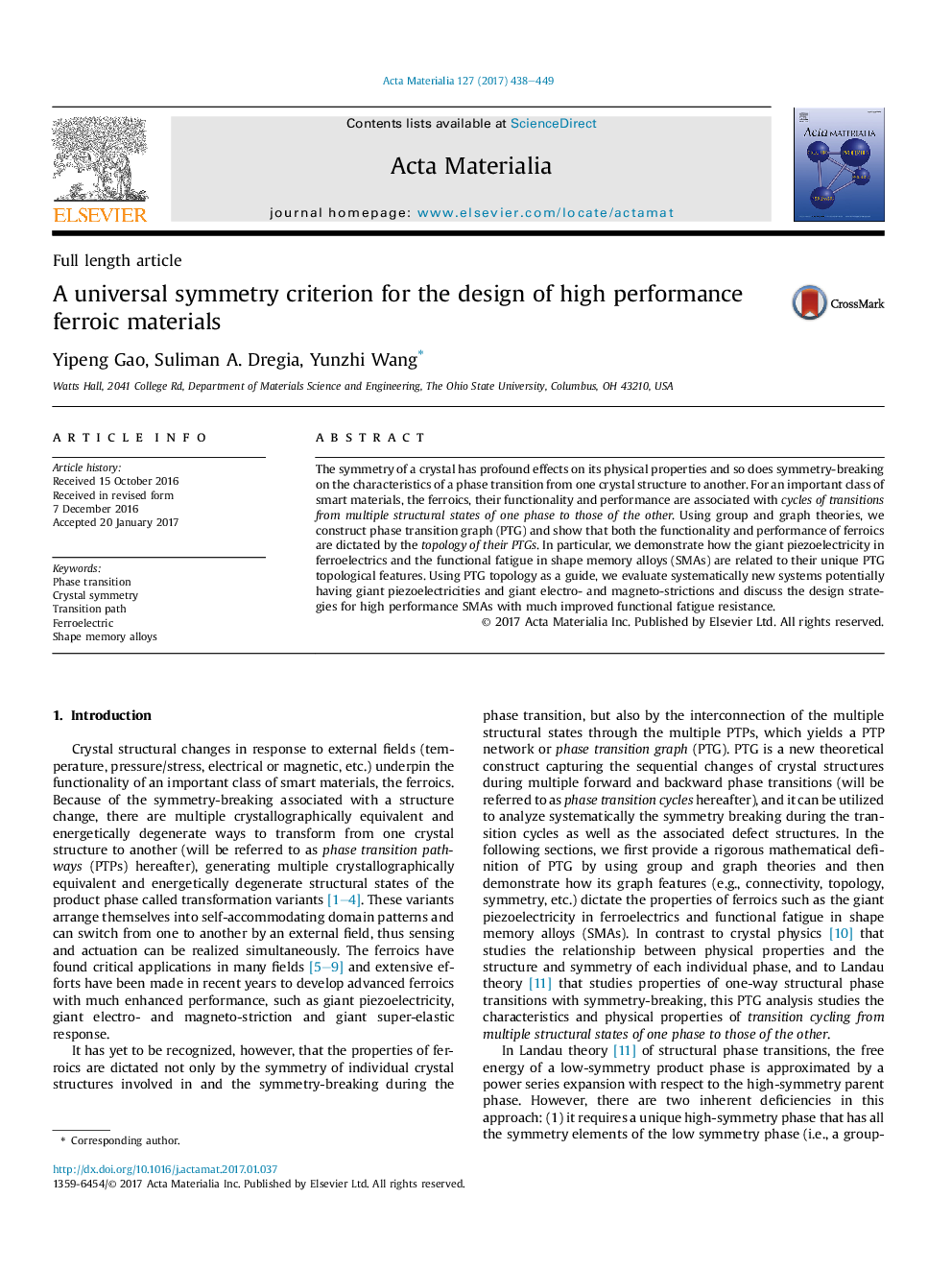| Article ID | Journal | Published Year | Pages | File Type |
|---|---|---|---|---|
| 5436347 | Acta Materialia | 2017 | 12 Pages |
The symmetry of a crystal has profound effects on its physical properties and so does symmetry-breaking on the characteristics of a phase transition from one crystal structure to another. For an important class of smart materials, the ferroics, their functionality and performance are associated with cycles of transitions from multiple structural states of one phase to those of the other. Using group and graph theories, we construct phase transition graph (PTG) and show that both the functionality and performance of ferroics are dictated by the topology of their PTGs. In particular, we demonstrate how the giant piezoelectricity in ferroelectrics and the functional fatigue in shape memory alloys (SMAs) are related to their unique PTG topological features. Using PTG topology as a guide, we evaluate systematically new systems potentially having giant piezoelectricities and giant electro- and magneto-strictions and discuss the design strategies for high performance SMAs with much improved functional fatigue resistance.
Graphical abstractConstruction of Phase Transition Graph (PTG) in 2D: (a) structural states (b) PTG for the square to hexagonal transition; (c) PTG for the rectangle to centered-rectangle transition; (d) PTG for the square to rectangle transition.Figure optionsDownload full-size imageDownload high-quality image (118 K)Download as PowerPoint slide
